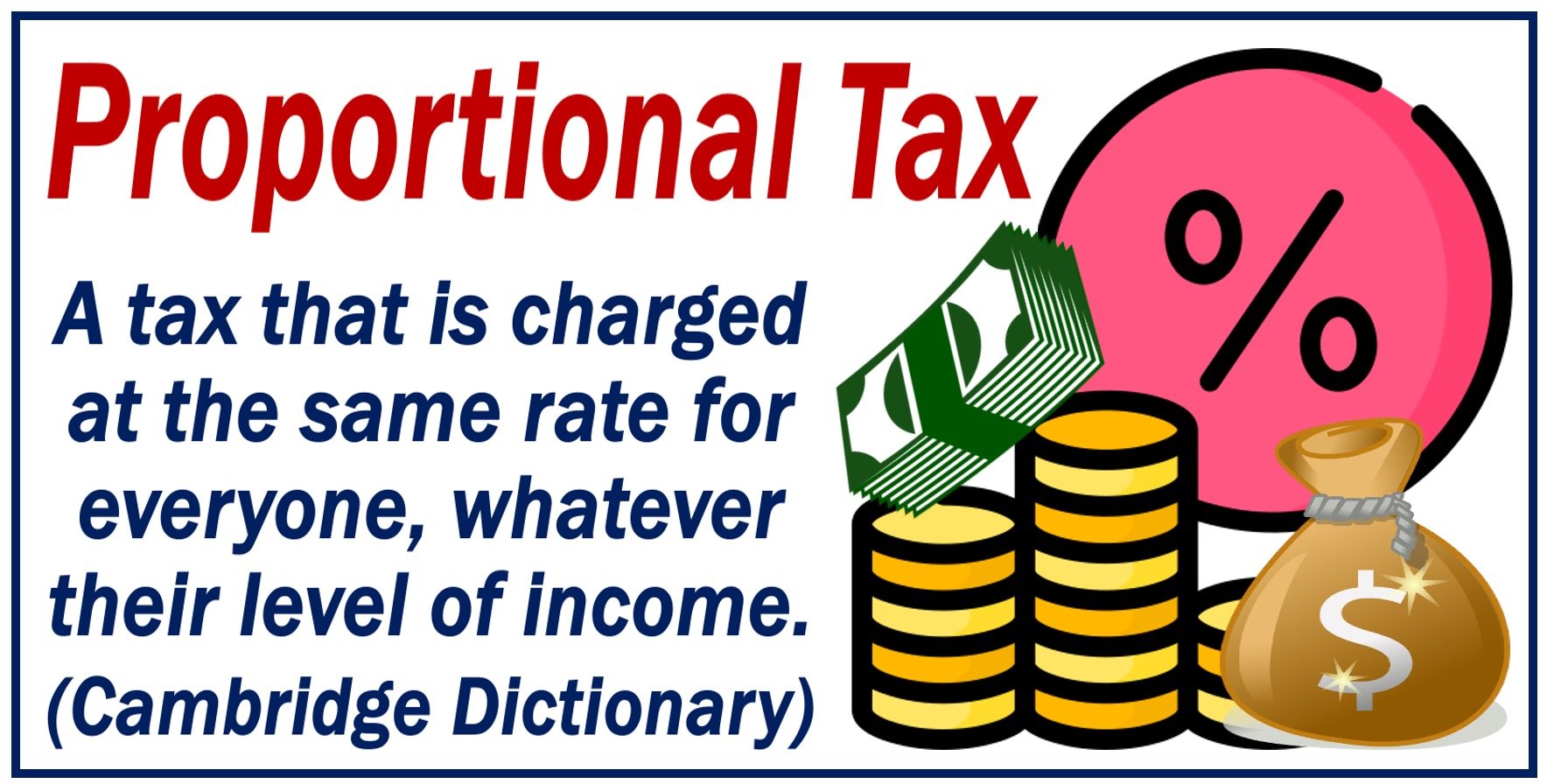What is proportional tax?
Proportional Tax, also called Flat Tax, is a taxation system where everyone pays the same percentage of their income, regardless of their income level. Progressive taxes, on the other hand, increase with higher income. Proportional tax rates are constant and differ significantly from the varying rates of progressive taxes.
According to the IRS (Internal Revenue Service), which operates under the Department of the Treasury of the US government, there are three types of taxes:
“1. Progressive tax – a tax that takes a larger percentage of income from high-income groups than from low-income groups. 2. Proportional tax – a tax that takes the same percentage of income from all income groups. 3. Regressive tax – a tax that takes a larger percentage of income from low-income groups than from high-income groups.”
Where can it be applied?
This tax system can be applied to many types of income, including individual earnings, corporate profits, and sales.
How does it work?
The same percentage of tax is applied to all income levels in a proportional tax system. For example, if the set rate is 10%, someone earning $40,000 will pay $4,000 in taxes, and someone earning $100,000 will pay $10,000.

Characteristics
Proportional tax is defined by several distinct characteristics, including:
-
Uniformit rate
The hallmark of a proportional tax system is its uniform rate applied to all taxpayers, regardless of their income.
-
Simplicity
One of the main benefits of a proportional tax system is its simplicity. The system is much easier for taxpayers to understand and for the government to manage.
Additionally, the proportional tax structure allows for easy adjustments to the tax rate in response to economic changes without altering the fundamental simplicity of the system.
A proportional tax system can also encourage savings and investment, as taxpayers may have greater incentive to earn more without facing progressively higher tax rates.
Advantages
There are several advantages to proportional tax, such as:
-
Fairness perception
Those in favor argue that proportional taxes are fair because everyone pays the same percentage of their income.
-
Economic efficiency
The simplicity of the system could potentially lead to increased economic efficiency and reduced administrative costs.
-
Predictability
A set tax rate provides predictability for both taxpayers and governments, which makes financial planning and budgeting easier to accomplish.
Disadvantages
There are several disadvantages that come with proportional tax, such as:
-
Regressive impact
Some critics argue that proportional taxes can have a regressive impact, placing disproportionate pressure on lower-income individuals relative to their income.
-
Revenue generation
Some people argue that proportional tax might not raise enough revenue for the government. The risk of a funding gap rises significantly when there is an economic downturn. Overall, public spending plans are easier to finance if the country has a progressive tax system.
-
Reduced progressivity
The aim of most governments across the world is to reduce inequality. Many people, including distinguished economists, argue that the only way to do that is with a progressive tax system.
Video – What is Tax?
In this visual guide presented by our affiliate channel, Marketing Business Network on YouTube, we explain what “Tax” is using straightforward language and easy-to-understand examples.
Written by Nicolas Perez Diaz

